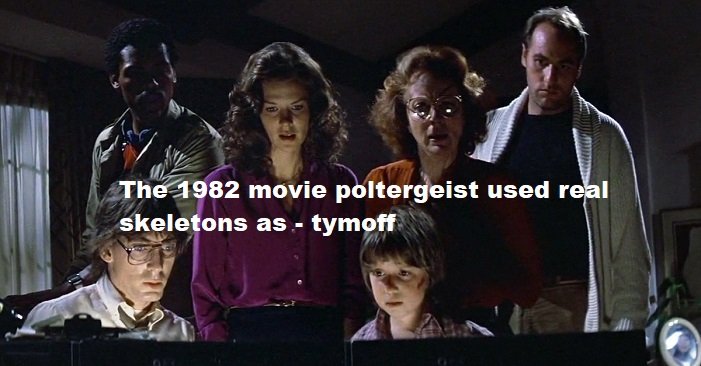The 1982 movie poltergeist used real skeletons as – tymoff

As a horror movie buff with a deep appreciation for the genre’s history, I’ve uncovered some genuinely unsettling stories from the sets of classic films. One such story that stands out is the chilling truth behind the 1982 movie Poltergeist.
It’s rumored that the filmmakers used real skeletons in one of the film’s most iconic scenes. Let’s explore this eerie legend and uncover the facts behind this shocking Hollywood decision.
The Iconic Pool Scene
If you’ve watched Poltergeist, you’ll recall the terrifying moment when Diane, portrayed by JoBeth Williams, falls into a muddy, rain-soaked pool, surrounded by skeletons. The fear on her face is palpable, and there’s a good reason for it—it wasn’t all acting.
Real Skeletons: Fact or Fiction?
Yes, it’s true. The skeletons used in Poltergeist were real human remains. JoBeth Williams confirmed in interviews that the production team used actual skeletons because they were more cost-effective than their plastic counterparts. This revelation has since become one of the most notorious pieces of trivia in horror film lore.
Why Use Real Skeletons?
In the early 1980s, real human skeletons were relatively easy to obtain and often used in movies and educational settings.
The special effects team for Poltergeist opted for real skeletons to enhance the scene’s realism, likely unaware of the long-lasting controversy this decision would spark.
The Poltergeist Curse
The use of real skeletons is frequently cited as a contributing factor to the so-called Poltergeist curse. Over the years, several cast and crew members have suffered untimely deaths and mysterious accidents, leading many to speculate that disturbing the dead may have brought a curse upon the production. While the curse remains a matter of speculation, it undeniably adds a haunting layer to the film’s history.
Modern Ethical Standards
Today, using real human remains in film is considered highly unethical. Advances in special effects and prosthetics have made it possible to create incredibly realistic replicas without resorting to such methods.
The story of Poltergeist serves as a stark reminder of how ethical standards in filmmaking have evolved over the years.
Conclusion
The revelation that Poltergeist (1982) used real skeletons adds an extra dimension of horror to an already terrifying film.
Whether you believe in the Poltergeist curse or not, this piece of Hollywood history is a fascinating example of the lengths filmmakers once went to achieve realism.
As a dedicated horror enthusiast, uncovering these dark secrets enriches my appreciation for the genre. If you’re as intrigued by the eerie and extraordinary tales behind your favorite horror films as I am, stay tuned for more bone-chilling revelations.




